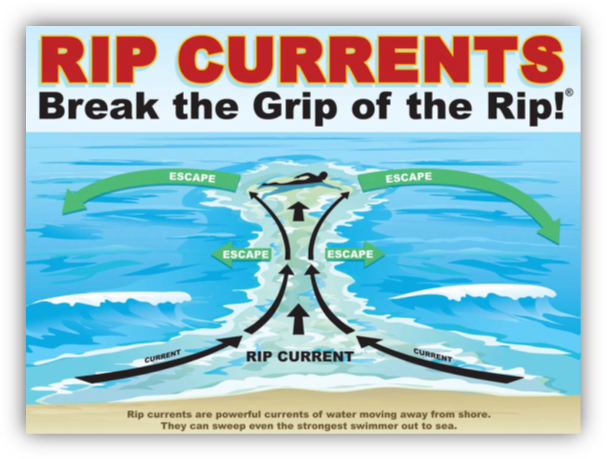 As the Frizz and UV indexes rise, so does the temperature of the ocean. On Friday, June 28, the offshore air temperatures rose to above 90 degrees, prompting droves of beachgoers to flock to the ocean to cool off. The current water temperature is 65 degrees and rising daily, and the New Jersey Department of Environmental Protection is stressing that people swim only at guarded beaches and learn how to escape a rip current if caught in one.
As the Frizz and UV indexes rise, so does the temperature of the ocean. On Friday, June 28, the offshore air temperatures rose to above 90 degrees, prompting droves of beachgoers to flock to the ocean to cool off. The current water temperature is 65 degrees and rising daily, and the New Jersey Department of Environmental Protection is stressing that people swim only at guarded beaches and learn how to escape a rip current if caught in one.
Rip currents are strong, generally narrow currents that flow outward from beaches, and can pull even the strongest swimmers away from shore.
More than 80 percent of surf-related ocean rescues are attributed to rip currents, said consortium coastal ecosystem extension agent Dr. Amy Williams. It is critical that swimmers not panic if caught in one and that they swim parallel to the shoreline until they are no longer in its grasp. At that point, they should be able to swim safely back to shore.
For nearly 20 years, the consortium made up of academic institutions and other organizations dedicated to coastal research and protection has conducted a Rip Current Awareness campaign, which includes producing and distributing thousands of signs that warn swimmers about the dangers of rip currents and illustrate what to do if caught in one. The signs are posted at high-traffic beach access and bathing points in essentially every shore community.
The consortium is making the signs as well as rip current awareness brochures and handouts available upon request to municipalities in English and Spanish, free of charge, for distribution at beaches, municipal properties and other locations.
For more information on rip current safety or to get a free download of the brochure, see http://njseagrant.org/ripcurrents/